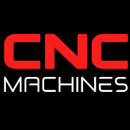How USA Manufacturers Can Compete with Overseas Companies Using Cheap Labor

How USA Manufacturers Can Compete with Overseas Companies Using Cheap Labor
Introduction
In an increasingly globalized economy, American manufacturers face stiff competition from overseas companies that benefit from cheap labor. However, by leveraging technology, innovation, and strategic practices, USA manufacturers can not only compete but also thrive. This case study explores how a hypothetical American manufacturing company, Advanced Precision Manufacturing (APM), successfully competed with overseas firms by implementing key strategies.
Background
Advanced Precision Manufacturing (APM) specializes in high-precision CNC machining. Founded in 2005, APM initially struggled with the influx of cheaper products from overseas manufacturers. Recognizing the need to differentiate itself, APM embarked on a comprehensive strategy focused on innovation, quality, and customer-centric solutions.
Key Strategies for Competing with Overseas Companies
1. Investing in Advanced Technology
Automation and Robotics: APM invested in state-of-the-art CNC machines and robotic systems to automate repetitive tasks. This not only reduced labor costs but also increased production speed and accuracy.
Industrial IoT (IIoT): By implementing IIoT, APM could monitor machine performance in real-time, predict maintenance needs, and minimize downtime. This improved overall efficiency and reduced operational costs.
2. Focusing on Quality and Customization
Quality Assurance: APM adopted stringent quality control measures, utilizing advanced metrology tools to ensure each product met exacting standards. This focus on quality differentiated APM from overseas competitors.
Customization and Flexibility: Unlike mass-produced items from overseas, APM offered customized solutions tailored to specific customer needs. This flexibility attracted clients requiring specialized components.
3. Leveraging Local Advantages
Shorter Lead Times: By manufacturing locally, APM could offer significantly shorter lead times compared to overseas suppliers. This was particularly appealing to clients needing quick turnarounds.
Customer Support and Collaboration: APM provided robust customer support, including on-site consultations and collaborative design services. This level of service was often lacking with overseas suppliers.
4. Adopting Lean Manufacturing Practices
Lean Principles: APM implemented lean manufacturing principles to eliminate waste, optimize processes, and reduce costs. This allowed the company to operate more efficiently and pass on savings to customers.
Continuous Improvement: APM fostered a culture of continuous improvement, encouraging employees to identify inefficiencies and propose solutions. This ongoing commitment to improvement kept APM competitive.
5. Strengthening the Supply Chain
Local Suppliers: APM prioritized sourcing materials from local suppliers, reducing dependency on overseas supply chains. This ensured more reliable access to raw materials and reduced transportation costs.
Supply Chain Management: Through advanced supply chain management software, APM optimized inventory levels, minimized delays, and ensured timely delivery of products.
Results
By implementing these strategies, Advanced Precision Manufacturing achieved remarkable success:
- Increased Market Share: APM's focus on quality, customization, and customer service attracted new clients, increasing its market share in the precision machining industry.
- Enhanced Profit Margins: Through automation, lean manufacturing, and efficient supply chain management, APM significantly reduced operational costs, resulting in higher profit margins.
- Improved Reputation: APM's commitment to excellence and innovation enhanced its reputation, leading to long-term relationships with high-profile clients.
This case study demonstrates that American manufacturers can successfully compete with overseas companies by leveraging technology, focusing on quality, and adopting strategic practices. Advanced Precision Manufacturing serves as a model for other manufacturers seeking to thrive in a competitive global market. By embracing innovation, efficiency, and customer-centric solutions, USA manufacturers can redefine 'Made in USA' and secure a strong position in the industry.
Key Takeaways
- Invest in advanced technology to improve efficiency and reduce costs.
- Focus on quality and customization to differentiate from mass-produced overseas products.
- Leverage local advantages, including shorter lead times and robust customer support.
- Adopt lean manufacturing practices to optimize operations and reduce waste.
- Strengthen supply chain management to ensure reliable access to materials and timely delivery.
Through these strategies, American manufacturers can not only compete with but also outperform overseas companies relying on cheap labor.


